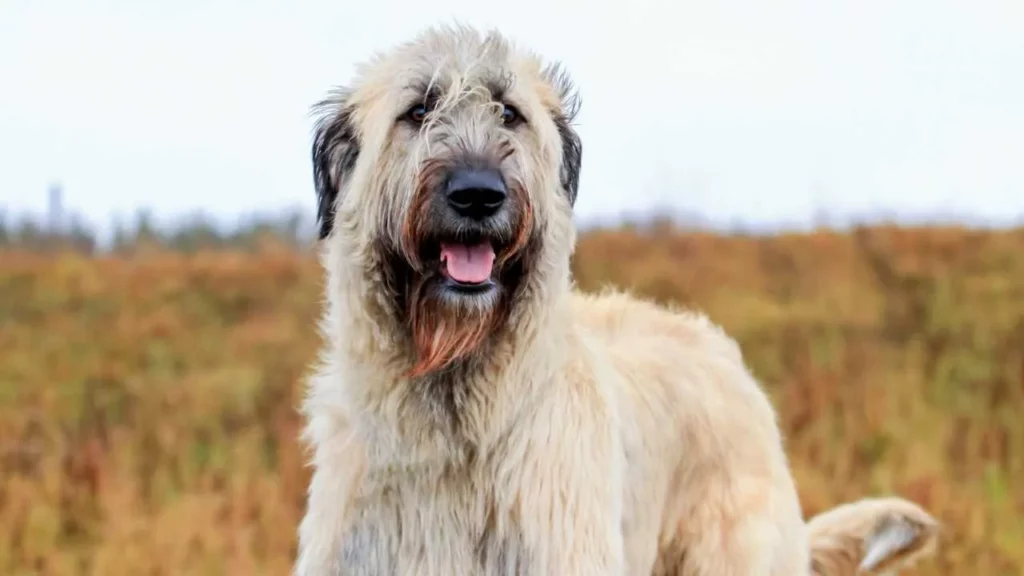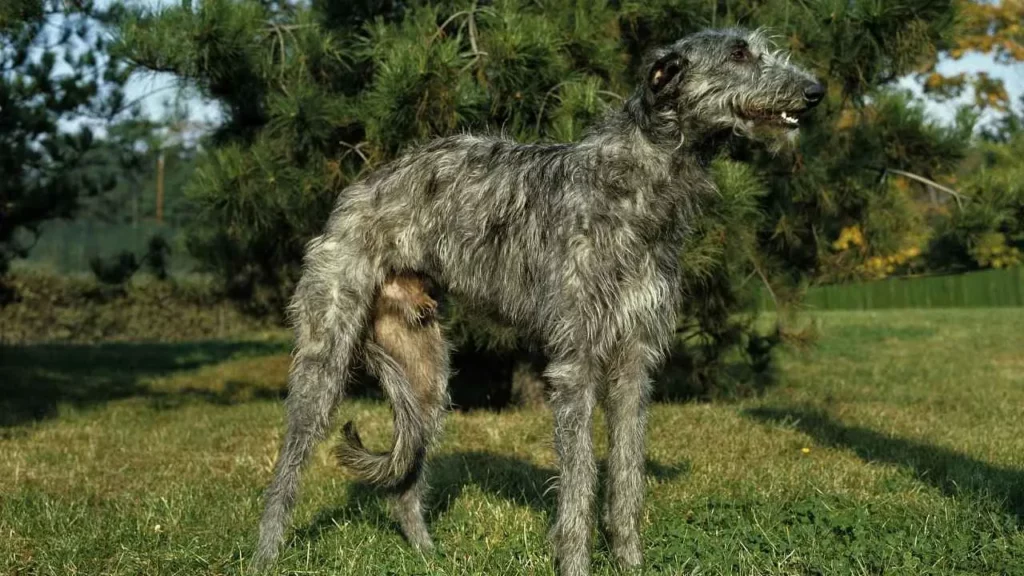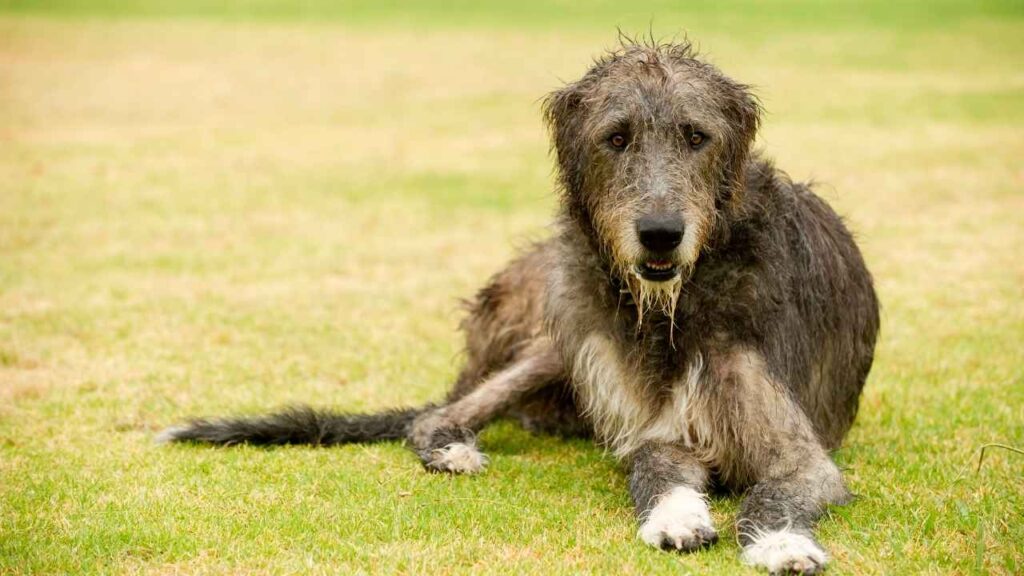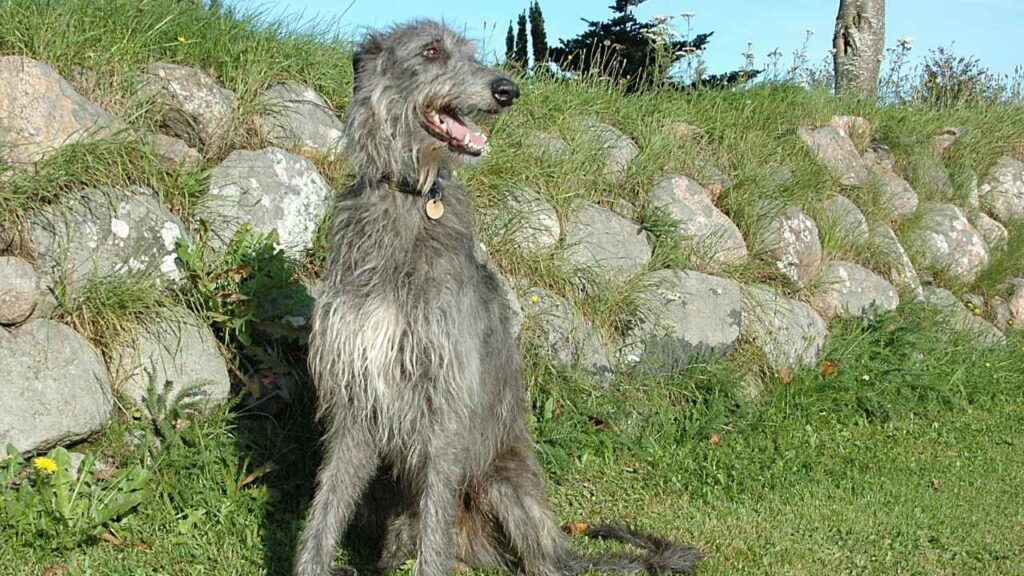When two towering, shaggy-coated hounds look this similar, it’s easy to get them mixed up! But don’t be fooled—one is a rugged warrior, the other a graceful sprinter. Both share ancient roots and a love for the great outdoors, but their personalities, energy levels, and even their ideal homes differ more than you’d expect.
One is all about raw power and loyalty, standing tall as a protector with a heart of gold. The other? A refined, fleet-footed hunting dog with elegance in every stride. Whether you’re drawn to strength or speed, knowing what sets them apart is key to choosing the right companion.
Let’s break it down—size, temperament, exercise needs, and more—so you can decide which of these legendary hounds is the perfect fit for you!
Irish Wolfhound vs. Scottish Deerhound: Key Differences
The Irish Wolfhound is a bigger and more muscular dog, while the Scottish Deerhound is leaner and faster. Wolfhounds are known for their deep loyalty and affection, craving human companionship, whereas Deerhounds are more independent and reserved.
Historically, Irish Wolfhounds hunted wolves and fought in battles, while Scottish Deerhounds specialized in chasing red deer for nobility. When it comes to exercise, Deerhounds love short bursts of speed, while Wolfhounds prefer steady endurance. If you want a powerful, affectionate dog, go for the Wolfhound; if you prefer a graceful, agile hunter, the Deerhound might be the better fit!
|
Feature |
Irish Wolfhound |
Scottish Deerhound |
|---|---|---|
|
Size & Build |
Larger, more muscular, powerful |
Leaner, more agile, built for speed |
|
Height |
Up to 35 inches (males) |
Around 30-32 inches (males) |
|
Weight |
140-180 lbs |
85-110 lbs |
|
Speed |
Moderate, built for endurance |
Faster, excels in sprinting |
|
Personality |
Affectionate, loyal, people-oriented |
Independent, reserved, dignified |
|
History |
Used in battles, hunted wolves |
Hunted red deer for nobility |
|
Exercise Needs |
Prefers steady, endurance-based activity |
Enjoys short, high-speed runs |
|
Best For |
Families wanting a gentle giant |
Owners seeking an elegant, athletic hound |
Irish Wolfhound vs. Scottish Deerhound: Size
Size isn’t just about height and weight—it’s also about proportion and function. While Irish Wolfhounds were built for battle, Deerhounds were made for chasing down prey at lightning speed. So, if you’re looking for a huge dog but prefer something a little leaner and faster, the Scottish Deerhound might be your pick!
Irish Wolfhound Size
When it comes to sheer size, the Irish Wolfhound is an absolute giant. These dogs can tower over most breeds, standing around 32 to 35 inches tall at the shoulder—sometimes even more! As per AKC, males typically weigh up to 180 pounds, while females are slightly smaller but still massive. Imagine a dog that could literally put its paws on your shoulders when standing on its hind legs!

One of the tallest dog breeds in the world
Can weigh as much as a grown adult human
Long legs and a lean yet muscular build
But don’t let their height fool you—Irish Wolfhounds aren’t bulky like Mastiff breeds. They have a lanky, athletic frame, built for speed and endurance rather than brute strength. Their deep chest and long limbs give them an elegant but powerful appearance. You might think a dog this big would be clumsy, but they’re surprisingly graceful.
Ever wondered why they’re so huge? It all goes back to their history as war dogs and wolf hunting dogs. They needed their size to take down large prey and intimidate enemies. Today, they’re more about cuddles than combat, but their impressive stature remains a key trait.
Scottish Deerhound Size
Now, the Scottish Deerhound isn’t exactly small either! According to PetMD, they stand between 28 to 32 inches at the shoulder, with males usually around 85 to 110 pounds. While they don’t quite match the Irish Wolfhound’s height or weight, they’re still an undeniably large and striking breed. If you’ve ever seen one, you know they have an almost regal presence.

Slightly shorter and lighter than the Irish Wolfhound
Slender, built for speed rather than bulk
Resembles a Greyhound but much larger
Unlike the Irish Wolfhound, which is a gentle giant, the Scottish Deerhound has a more streamlined, Greyhound-like build. They have long legs, a deep chest, and a narrow waist, making them one of the fastest dogs. You wouldn’t guess it at first glance, but these dogs were originally bred to hunt massive red deer in the Scottish Highlands—hence the name!
Irish Wolfhound vs. Scottish Deerhound: Behavior
Both breeds are loving and gentle, but the Irish Wolfhound is more affectionate and people-dependent, while the Scottish Deerhound is independent and slightly reserved. Which personality sounds more like your type?
Irish Wolfhound Behavior
If you’re looking for a gentle giant, the Irish Wolfhound is exactly that. Despite their massive size, these dogs are incredibly calm, affectionate, and friendly with everyone, states WebMD. They thrive on human companionship and are known for their loyal and loving nature. In fact, they’re so gentle that they’re often called “the world’s biggest lap dog”—good luck fitting one on your lap, though!

Extremely affectionate and people-oriented
Gentle with children and other pets
Not aggressive dogs but protective when needed

Irish Wolfhounds are not guard dogs in the traditional sense. They might look intimidating, but they’re more likely to welcome strangers with a wagging tail than a growl. That said, their sheer size can still deter intruders. They’re also emotionally sensitive, so harsh training methods won’t work—positive reinforcement is the way to go.
Ever met a dog that thinks it’s a human? That’s an Irish Wolfhound for you. They want to be right next to their people, following them from room to room. If you leave them alone too often, they can become lonely and even a little sad. So, if you want an independent dog, this might not be the best fit!
Scottish Deerhound Behavior
The Scottish Deerhound is elegant, independent, and reserved—but don’t mistake that for coldness! These dogs are incredibly sweet-natured, just a little more laid-back compared to the Irish Wolfhound. They love their families but tend to be quieter and more self-sufficient. Think of them as the aristocrats of the dog world!

Affectionate but not clingy
Independent streak—may not always listen right away
Very friendly but slightly more reserved with strangers
Unlike Irish Wolfhounds, who are eager to please, Deerhounds have a mind of their own. They’re not stubborn dogs in an annoying way, but they do have that classic sighthound independence. If you call them, they might look at you as if to say, “Hmm, do I really need to get up right now?” They respond best to patient training with positive reinforcement.
One thing’s for sure—these dogs are not couch potatoes. Deerhounds were bred for chasing fast-moving prey, and that instinct is still strong. If they see something dart across the yard, they’ll be gone in a flash! So, a securely fenced area is a must. If you love long walks or have space for them to run, they’ll be in heaven.
Irish Wolfhound vs. Scottish Deerhound: Health
Both breeds require careful health management, but the Irish Wolfhound has a shorter lifespan with more heart-related concerns, while the Scottish Deerhound is prone to bleeding disorders and liver shunts. Neither breed is for the faint of heart, but for those who love them, their companionship is worth every second.
Irish Wolfhound Health
When it comes to health and vitality, their massive size puts a lot of strain on their body, and like many giant breeds, they are prone to several serious health issues. If you’re considering one, it’s important to be prepared for potential vet visits.

Dilated cardiomyopathy (DCM): A heart condition common in large breeds
Bloat (Gastric Torsion): A life-threatening emergency where the stomach twists
Osteosarcoma (Bone Cancer): One of the leading causes of death in Irish Wolfhounds
Since they grow so rapidly, joint and bone issues like hip and elbow dysplasia are also concerns. Regular vet check-ups, a balanced diet, and avoiding strenuous exercise in their puppy years can help prevent some of these problems. But let’s be real—owning an Irish Wolfhound means cherishing every moment because their time with you will be far too short.
Scottish Deerhound Health
The Scottish Deerhound also face some serious health challenges. While they’re not quite as prone to heart disease as Irish Wolfhounds, they do suffer from some similar conditions.

Bloat (Gastric Torsion): Just like Irish Wolfhounds, Deerhounds are at risk
Osteosarcoma: Unfortunately, common in large sighthounds
Liver Shunt: A condition where blood bypasses the liver, leading to toxin buildup
One unique issue in Deerhounds is delayed bleeding disorder, where their blood doesn’t clot properly after injuries or surgeries. This makes even routine procedures riskier, so finding a vet experienced with the breed is crucial.
Even though they have better longevity than Irish Wolfhounds, they still require careful monitoring, a high-quality diet, and regular gentle exercise to keep their joints and hearts healthy.
Irish Wolfhound vs. Scottish Deerhound: Life Expectancy
If you’re choosing between these breeds based on lifespan, the Scottish Deerhound has the advantage, typically living a few years longer. However, both breeds require careful health management, and their time with you—while short—is bound to be filled with love, loyalty, and unforgettable memories.
Irish Wolfhound Life Expectancy
When it comes to lifespan, the Irish Wolfhound is unfortunately one of the dog breeds with the shortest lifespan. Their average life expectancy is just 6 to 8 years, as per ASPCA, which can feel far too brief for such a gentle and loving companion. Their massive size plays a big role in this—larger dogs simply age faster than smaller ones, leading to a short time.

Most Irish Wolfhounds don’t live past 7 or 8 years
A lucky few reach 9 or 10, but it’s uncommon
Their biggest health risks include heart disease, bone cancer, and bloat
Despite their short lives, Irish Wolfhounds are loyal, affectionate, and unforgettable canine companions. Owners often say the heartbreak of losing them early is worth the love and joy they bring. If you’re considering one, be ready to cherish every moment with these gentle giants.
Scottish Deerhound Life Expectancy
The Scottish Deerhound lives a bit longer than the Irish Wolfhound, but their lifespan is still short compared to smaller breeds. They typically live 8 to 11 years, with some making it to 12 or 13 under ideal conditions. While they also suffer from genetic health issues, they tend to be slightly more resilient than their Irish cousins.

Many Deerhounds reach 10 years, while a few make it to 12+
Their biggest health concerns include bloat, bone cancer, and liver shunts
They also have a bleeding disorder, making surgeries and injuries riskier
Even though they tend to outlive Irish Wolfhounds, their lifespan is still relatively short for a family pet. That said, with proper care, regular check-ups, and a good diet, you can help them live the fullest life possible.
Conclusion
Both the Irish Wolfhound and the Scottish Deerhound are distinct breeds with a long history of hunting and companionship. While they share the title of gentle giants, they have key differences in their physical characteristics, temperament, and exercise needs. The Irish Wolfhound, standing at 32 inches or more, is the larger of the two breeds, originally bred in Ireland for hunting wolves and protecting families. In contrast, the Scottish Deerhound, slightly smaller and lighter, was developed in Scotland to hunt deer.
When it comes to temperament, both dogs share a sweet, sensitive, and gentle nature, making them great with kids and families. The Irish Wolfhound tends to be more laid-back, while the Deerhound may require more exercise due to its greyhound-like speed and agility. However, neither breed is aggressive, despite their imposing appearance. Their history spans centuries, with these giant breeds once being symbols of nobility and prestige. The AKC breed standard highlights their noble heads, strong builds, and rough coats, which help them endure harsh conditions.
Health-wise, both breeds are prone to conditions like bloat, heart disease, and bone cancer, requiring careful attention from a responsible breeder and a dedicated owner. The Irish Wolfhound’s eyes hold a gentle, almost soulful expression, while the Deerhound’s sight is sharp, trained to catch fast-moving prey. Despite their large size, they are sensitive hounds that thrive in loving homes with plenty of walks, space, and affection. Sadly, their lifespans are shorter than many other breeds, with the Wolfhound averaging 6 to 8 years and the Deerhound slightly longer at 8 to 11 years.


